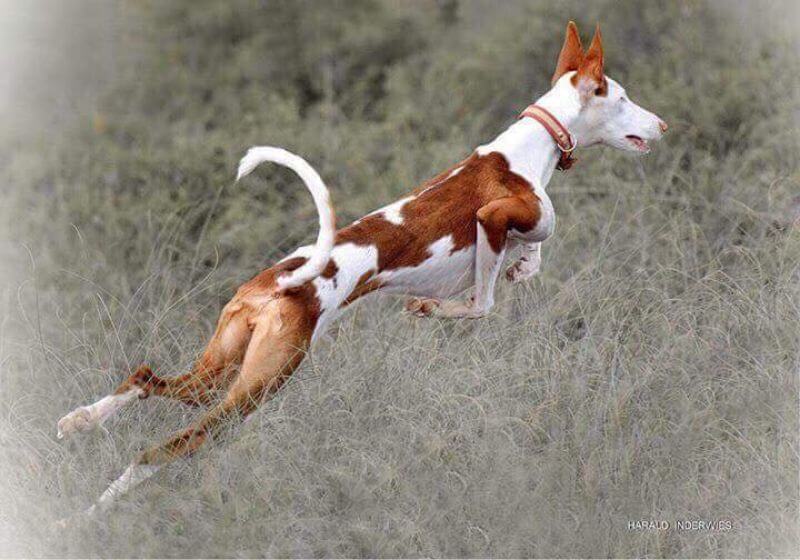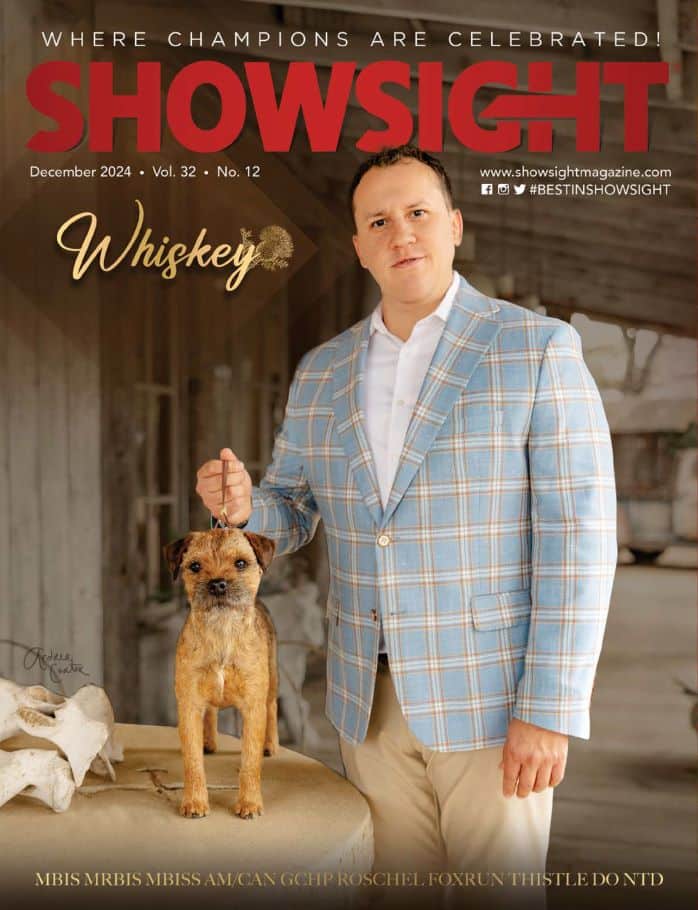Demystifying the Ibizan Hound Front
From the Breed Standard:
Forequarters: Angulation is moderate. The shoulders are elastic but never loose, with moderate breadth at the withers. The shoulder blades are well laid back. At the point of the shoulder, they join to a rather upright upper arm. The elbow is positioned in front of the deepest part of the chest. It is held in, but not so much as to restrict movement.

Body: The chest is deep and long, with the breastbone sharply angled and prominent.
The Ibizan Hound possesses a unique front, for sure—and much of the breed’s function can be attributed to this assembly because, when combined with overall balance and moderation, it makes for an unequalled and tireless hunter in its native terrains. But how does a judge evaluate and appreciate this uniqueness in the drab right angles of the Conformation ring? Let’s discuss the aforementioned pieces from the Standard as they relate to the front of this hunting dog.

“Angulation is moderate.” The first sentence speaks a lot to the importance of overall balance—nothing on this dog should appear overdone, and should be harmonious in balance. In short, the front should match the rear, and the dog’s movement should be sound and effortless at any speed. The Ibizan should not have to fly around your ring to show you his gait.

“Shoulders are elastic but never loose,” coupled with “shoulders are well laid back.” The Ibizan Hound’s shoulders are indeed very flexible. The shoulder attachment on the trunk of the dog will dictate much of how the front is interpreted. Well-laid-back shoulders allow free use of various head carriages in the breed while moving. A dog with shoulder blades “in his neck” will have to drop his head to cover ground efficiently. While the breed does not have to carry his head upright at a fast pace, he should have the ability to sight his prey. Likewise, he should also be at ease to track and drop his head. The Ibizan is an all-purpose hunting dog, after all.

“At the point of the shoulder, they (shoulders) join a rather upright upper arm,” coupled with “the chest is deep and long, with the breastbone sharply angled and prominent.” These two statements together point to a front assembly that is “slightly” more forward-set than your traditional sighthound and “slightly” more straight or upright. Because of this, and a “slight” spring of ribs, we see a dog whose front has much more flexibility; a huge win for a dog who needs to propel himself over high brush and then fold up his legs to get them out of his way as he rockets across his terrain.
However, a dog whose front is set on too far forward will not have a perceivable prosternum and may present as narrow. This may also be observed as a lack of prosternum, a loose front, or east-west (slight toeing out is perfectly acceptable in the breed). Overall, this front, while different, should be evaluated as it relates to the function of the animal and in harmony with his general balance.





